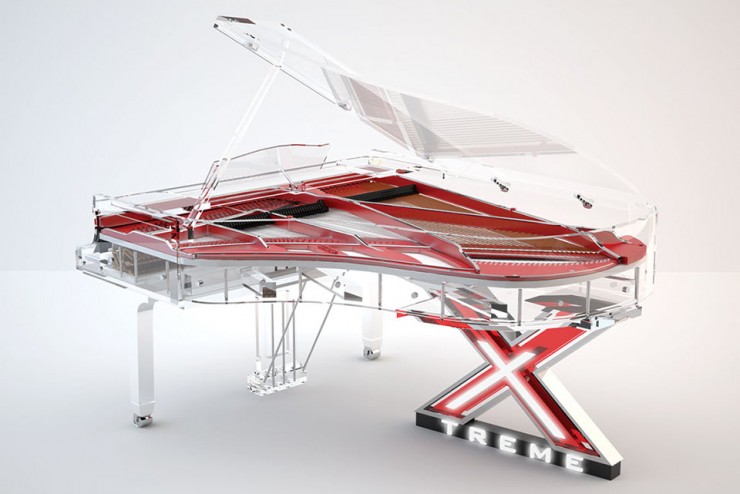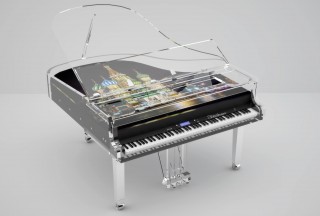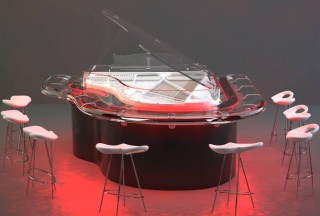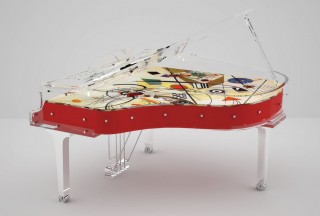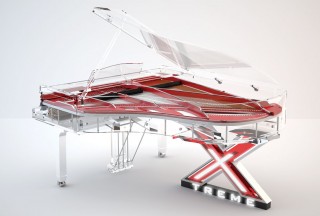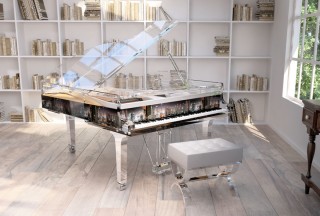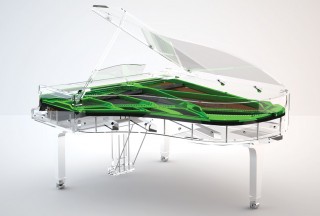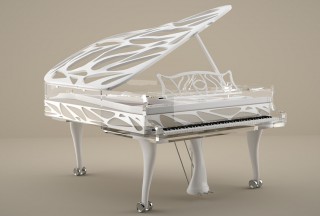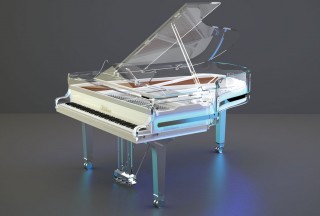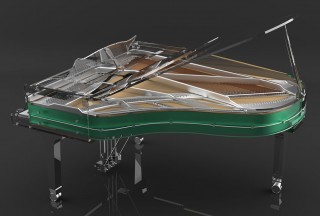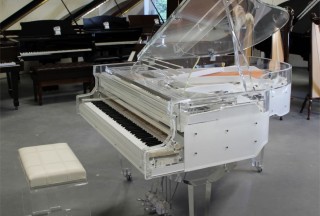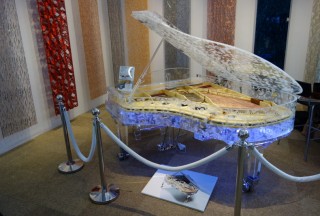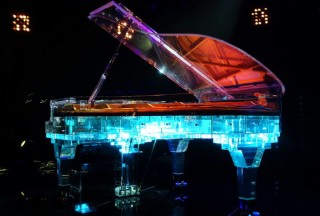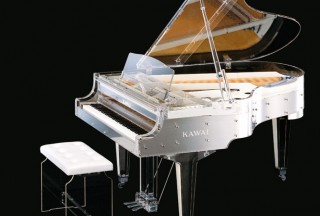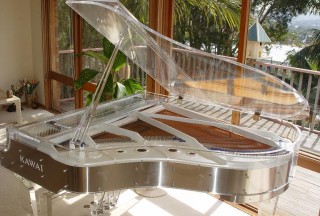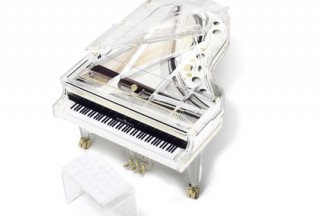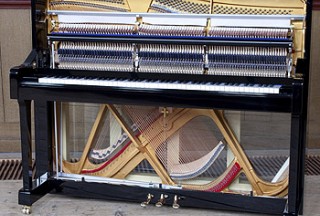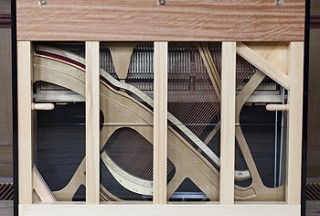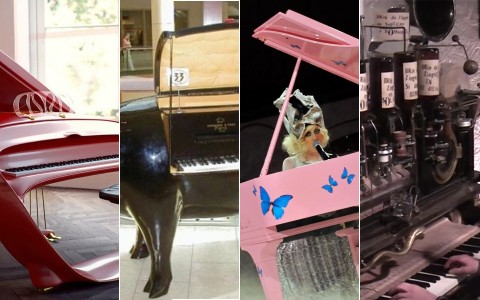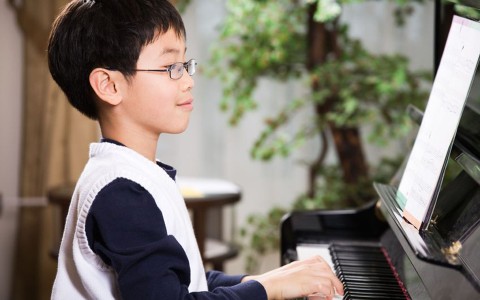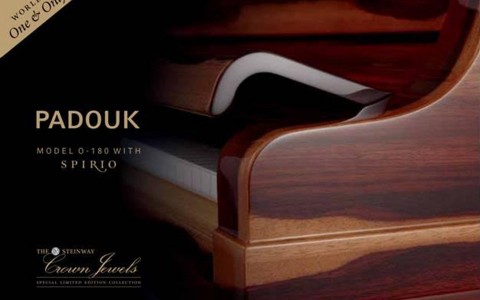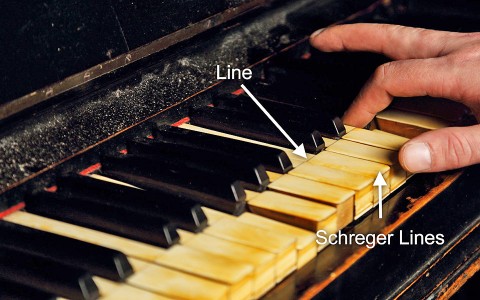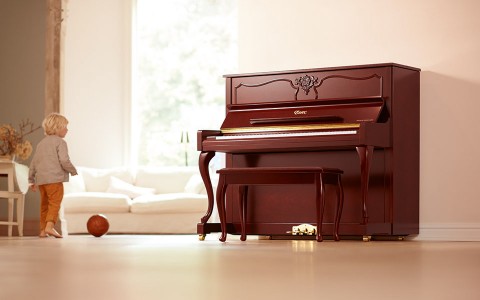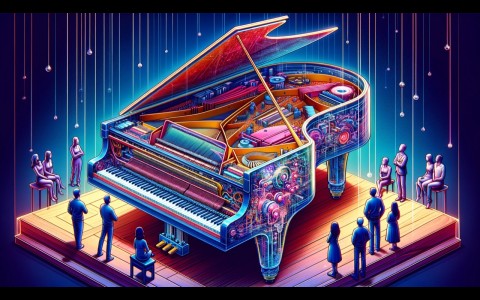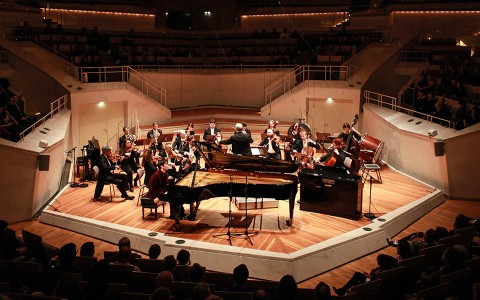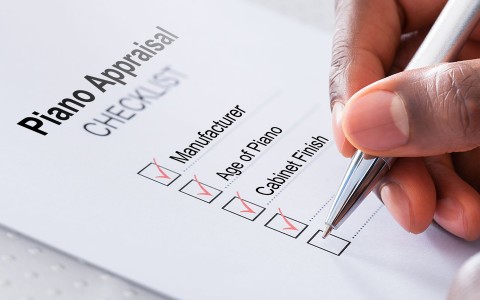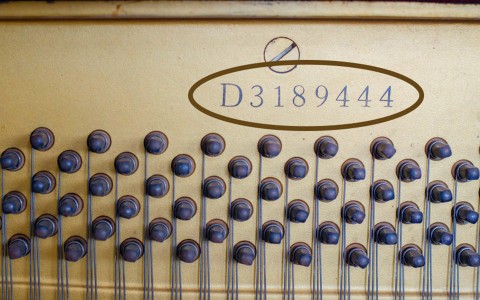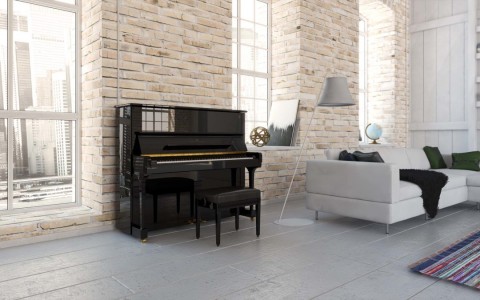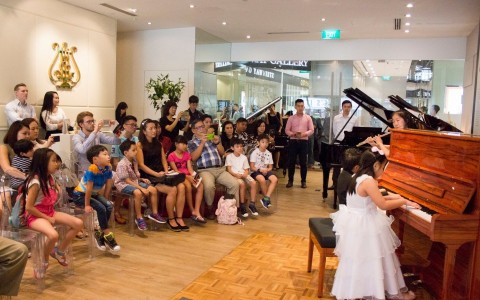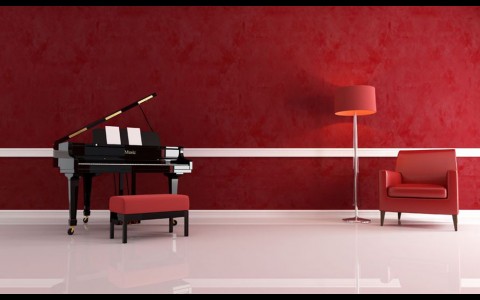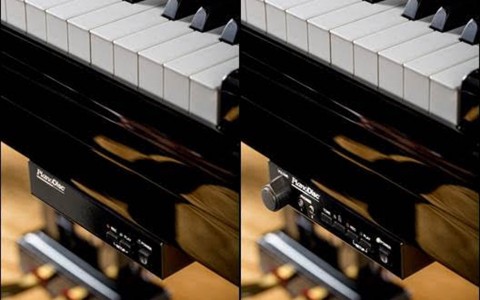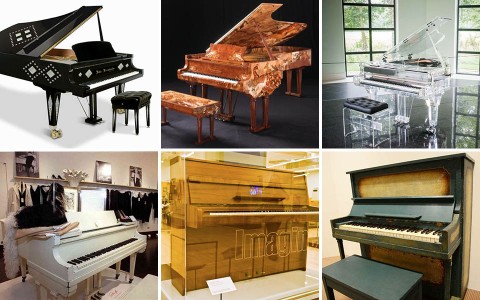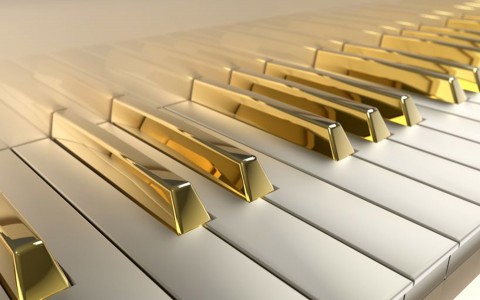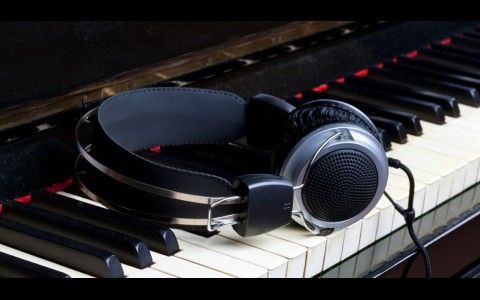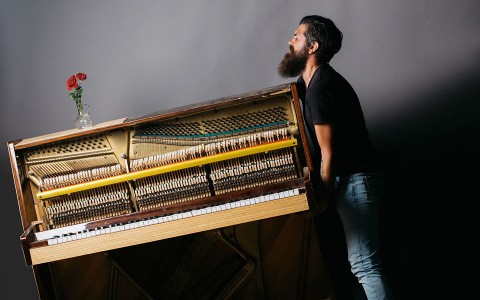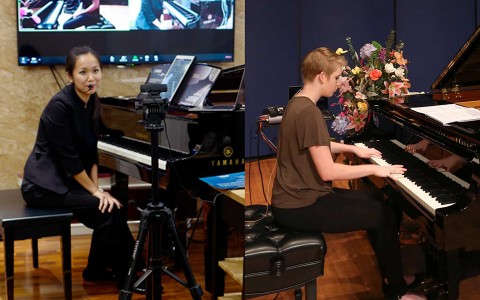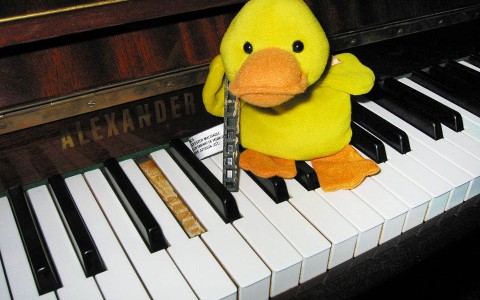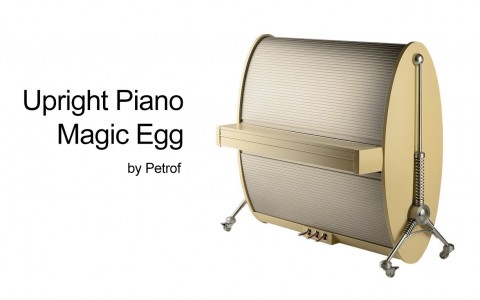Every product made for the consumer market comes in various shapes and sizes, vying to capture the hearts of customers who hail from a wide spectrum of backgrounds and possess different tastes. In the free market, vendors need to display creativity in their offerings, more than ever, to differentiate themselves from their competitors and to establish a niche for themselves. The same is true for the piano market. In recent years, transparent pianos have been gaining popularity. While many still prefer the traditional, wood-based instruments with a glossy lacquer finish, the fine examples of which grace concert halls and jazz clubs, others are opting for their modern, transparent counterparts that present a contemporary feel.
Even though transparent pianos are a faily recent phenomenon, the patent for transparent piano lids dates as far back as 1976. Originally filed with the US Patent and Trademark Office in November 1974 by the Libby-Owens-Ford Company, a manufacturer of flat glass in Ohio, the patent also covered the hinge mechanism that connected the lids with the body and saw such transparent lids put to use by the Boston Pops Orchestra and the Toledo Symphony Orchestra.
Transparent pianos may exist in two forms: A fully-transparent piano that allows an unhindered view of the inner workings of the instrument and one that has a transparent lid over a plastic-encased wooden body. Either way, such modern pianos not only are visual treats in their own right but also enable the audience to now have a better look at the players, something that had largely not been able to have been accomplished in the past. Transparent pianos largely come from seven piano-makers, each with its unique strengths.
Blüthner
Julius Blüthner Pianofortefabrik GmbH is a Germany-based piano-maker. It was established in Leipzig in 1853 and by 1900 had become Germany’s largest piano manufacturers. It became known for its Aliquot strings, a cylindrical soundboard as well as angle-cut hammers, all of which gave the Blüthner its rich, unique sounds.
The piano-maker is also known for being the only piano to have been carried on board the Zeppelin LZ129 Hindenburg airship, though this was a modified version that featured an alumininium plate so as to reduce its weight.
Blüthner pianos have been owned by royals, composers and other notable personalities, including Emporor Franz Joseph I, Johann Strauss II and Pyotr Ilyich Tchaikovsky. Blüthner’s owners were given royal warrants of appointment to the court of the Austrian-Hungarian Empire, a testimony to the high quality of their products.
Blüthner’s transparent pianos fall under the Crystal Edition. One was used during Ariana Grande’s performance of Just a Little Bit of Your Heart during The Grammy Awards 2015.
Lucid
Lucid Pianos from Spain also offers transparent pianos, in partnership with Blüthner. The partnership between the two companies is a complimentary one - one that sees Blüthner, with its long history and rich heritage, supplying its manufacturing expertise, and Lucid contributing its designing skills. Lucid’s pianos excel with their aesthetically-pleasing and futuristic designs that bring a modern touch to the world of piano. Purchasers of Lucid pianos are able to customise their pianos in the form of the colours of the frame and the soundboard, the type of veneer used on the piano’s exterior, as well as optional LED illuminition that can be added upon request. Among the interesting pianos Lucid has come up with are a transparent, digital grand piano and a piano attached with a side bar.
Steinhoven
Irish company Monaghan Music & Piano Centre owns the Steinhoven brand of pianos, produced by a contract manufacturer in China. From its humble beginnings in 1999 when it rebuilt a single piano, the company has grown and now moved into the wholesale business. The company got its seal of recognition when it won the Outstanding Small Business Category in the SFA National Small Business Awards 2014. Monaghan started supplying its Steinhoven pianos to the Chinese market and has since imported them into the United Kingdom, Ireland and continental Europe. Today, Steinhoven pianos are exclusively used in the Shanghai Conservatory of Music. Monaghan produces a range of transparent pianos, including the flagship SG 170 Crystal (Transparent).
Crystal Music Company
Like Lucid Pianos, Crystal Music Company (CMC), operating out of Zeewolde, The Netherlands, offers elegant transparent pianos for modern pianists. The bodies of the pianos are produced by Acrylic Couture, which is based in Germany. CMC has the deserving claim of being the world’s only manufacturer of fully-handcrafted transparent grand pianos since 1996. Among the beautiful pianos that have been introduced by CMC are the CMC First Edition and a white-and-transparent-themed grand piano that participated in the Masters of LXRY Amsterdam 2015 exhibition.
Kawai
There is a Japanese contribution to the marketplace too. Kawai, a Hamamatsu-based maker of musical instruments and operator of music schools, introduced its first grand piano in 1928. Recently, it offered transparent pianos under the Crystal Grand Pianos (CR) series. Kawai originally produced the CR-40A and CR-30, but the latter has apparently since been discontinued. The Kawai CR-40A has proved popular among music composers and performers. It was introduced by jazz pianist Graham Wood and classical pianist Irina Vasilyeva at the Snadens Pianos concert in Perth, Western Australia. One CR-40A is owned by renowed Australian relaxation music composer Ken Davis.
Schimmel
Also on the list is Schimmel Pianos, a four-generation family business originally founded in Leipzig, Germany in 1885. Schimmel has been making traditional pianos but had to declare bankruptcy in 2009. After successful restructuring, it became solvent again in 2010. Interestingly, long before other piano-makers introduced transparent pianos, Schimmel already developed the idea of producing a semi-transparent piano. In 1951, Schimmel presented a prototype of such a piano. It has survived through the years, to be known as the Schimmel Plexiglass. The current model is known as the K213 Glass.
Stemco
The last piano-maker on the list is Stemco, a piano-maker from The Netherlands. In contrast with the other piano-makers, Stemco does not work with grand pianos or aim to make its pianos aesthetically-pleasing. In a move that seems to suggest its attention in the mass market, Stemco specialises in upright pianos. Instead of making the back frame and the lid from acrylic, the company focuses on the soundboard, which it makes from glass. The rest of the piano retains the original wooden look.
This article discusses seven piano-makers known to be involved in the supply of transparent pianos, however, given the interest in these instruments in the market, the list could potentially be longer. There was initial concern within the piano community with regards to the quality of music from these non-traditional pianos, however, it appears that these fears may be unfounded; these modern works of art seem to be able to withstand scruntity from music lovers. The piano community can almost certainly look forward to more beautiful and elegant pianos going forward.
